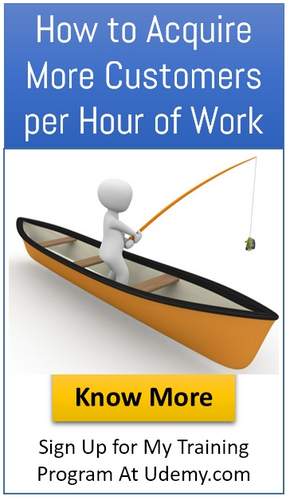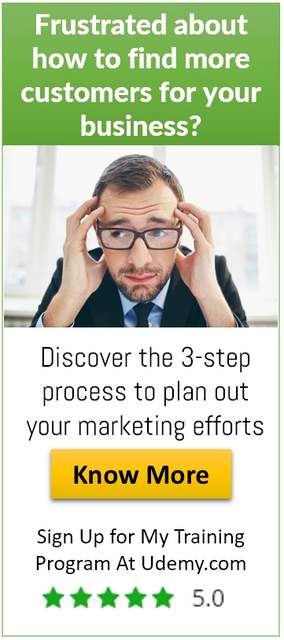Call to Action Marketing
Call to Action Marketing is a short communication tool for customers to act. This is part of the customer acquisition process. Every marketer wants to generate leads and also hopes that most of the leads will result in a customer for the company.
Competition has become severe, especially, for getting the attention of the customers in the virtual world. This is in the context of research finding that attention span is only 8 seconds when anyone visits a website.

Image Source:stuart miles in freedigitalphotos.net
Call to Action Marketing - Definition
“By definition, in marketing, a call to action (CTA) is an instruction to the audience to provoke an immediate response. So basically you’re giving someone the next step especially the one you want them to take.”- Sherri Brown
Call to Action Marketing- Role
The entire purpose of marketing is to generate leads into your business. Then you guide them through the next step. The simplest way to do this is once you have added value and informed your prospect about product/ service.
A CTA can be a simple non-demanding request like "choose a colour" or "watch this video", or a much more demanding request. An obvious CTA would be requesting the audience to purchase a product or provide personal details and contact information.
Call to Action Marketing- Tips for Effective CTA
ü Talk about one specific thing
ü Straight Forward
ü Easy to see
ü Understanding and Appealing
ü Choosing the right Color*
ü Click should Provoke to take action
*Ann a color expert opines that 60-90% of a reader’s initial assessment is based on its color.
Blue Color is designated as an universally liked color.
Call to Action Marketing- Examples of Use
News Letter
Gift Items
Discount Code
Call to Action Marketing- A Book Review
The following review published in Amazon by Peter Leerskov gives very useful insight for effective CTA process for the e-commerce portals.
Why do website conversion rates remain at a gloomy 2-5 per cent?
"Call for Action" focuses on how we can
improve the conversion rates,not from a technical or academic or conceptual
standpoint. Instead it takes a rare PRACTICAL and down-to-earth approach on how
to improve conversion rates to improve sales and thus, profits.
What is CONVERSION? Virtually all websites have
a persuasive purpose; to get someone to subscribe, to register, to inquire or
to buy something. And if all we get is 2-5 per cent conversion, we ought to
review our website. Do we offer a product or service that could meet the needs
of more than 2-5 per cent of the market? Can visitors find that solution on the
website? Do they understand our offer's value? Was it made at the right time?
Are we sure they're coming back?
NAVIGATION is the biggest challenge websites
face, the authors argue. The issues are: What to do with the traffic once it
lands on the website? How to get visitors to take the first action and click
deeper? And once there, how to induce visitors to click to the next step, and
the next, and the next?
The fundamental idea is that a PERSUASIVE
ARCHITECTURE links a visitor's buying experience to our company's sales
process. It bridges the buy/sell process in a measurable way. If you can
influence visitor behaviour and empathize with visitor motivations, you can
influence results to provide a better experience and more frequent, effective
conversions.
The book is filled with illustrative screen
dumps of websites (before and after a change). This is such a great benefit
how-to field book on e-commerce improvements. In my opinion, most e-commerce
sites can recover the book's cost price in a few days just by following one or
two of the practical suggestions in the many diverse case studies.
The primary focus of this book is e-Commerce.
The key messages on conversion, however, are important to anyone running a
large website.
This is a rare book. I've been involved in
e-commerce since 1997 and read many interesting books on this topic. But I've
never found such a practical approach to optimizing e-commerce web sites as
this one.
The brothers Eisenberg call themselves "wizards
of web". I agree and hope my existing and future competitors don't read
and act on this book. These secret formulas to improve online results are very
effective, indeed.
If you're looking for a conceptual e-commerce
theory, please look somewhere else. This is about the nuts and bolts about
making money with an e-commerce web site. If you don't have or don`t plan to
have such a website; forget about this book. Then it's a waste of time.
Call to Action Marketing- Conclusion

Image Source:stuart miles in freedigitalphotos.net
Lead generation is a highly critical activity for any business especially for startups. Call to Action is a tool to get connected with potential customers. E-Mail of a person, many a times may be the golden key to convert them to a customer. The right CTA will facilitate this.
Measure your effectiveness of color and design used for CTA and be willing to experiment till the right combination clicks and the doors open to the customers.
By changing nothing, nothing changes

